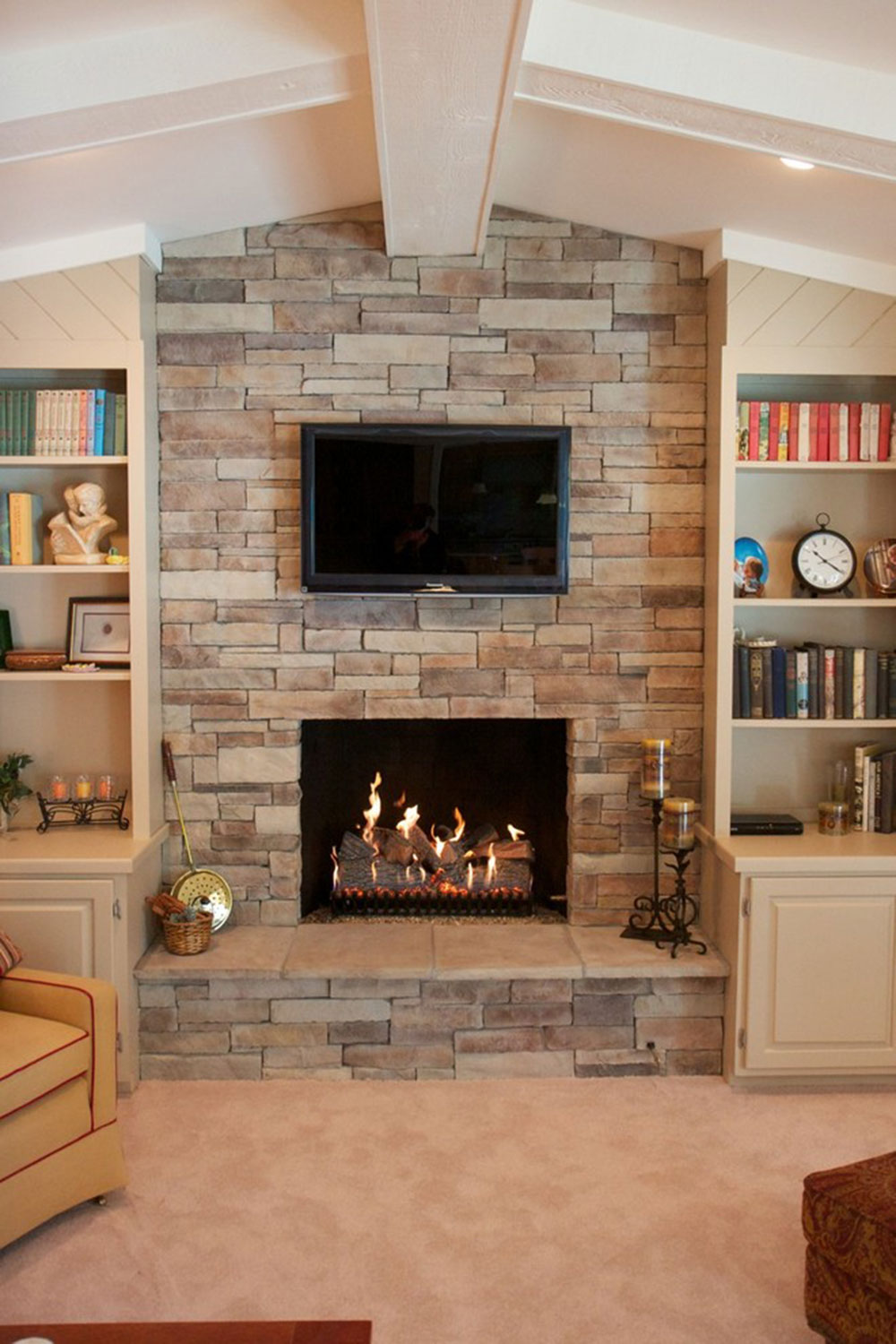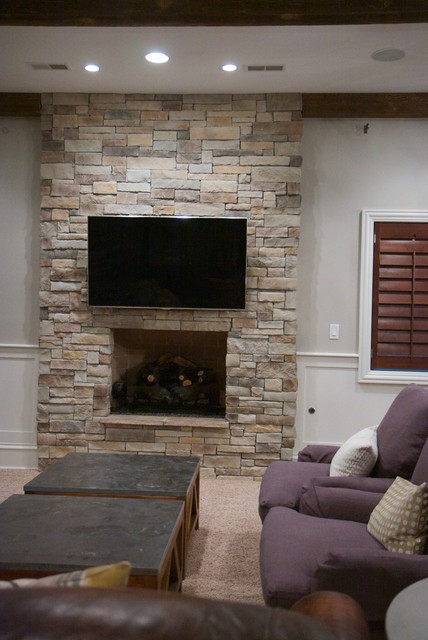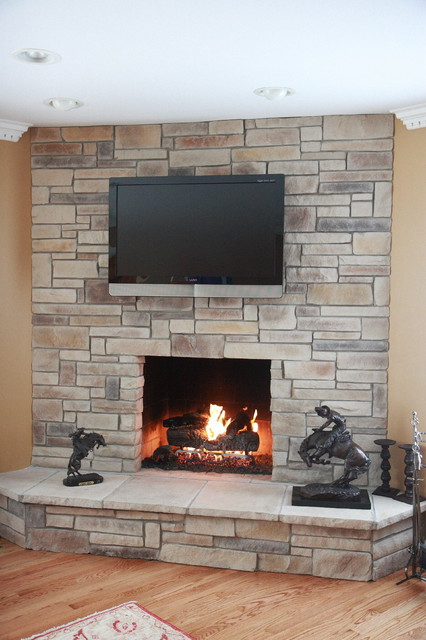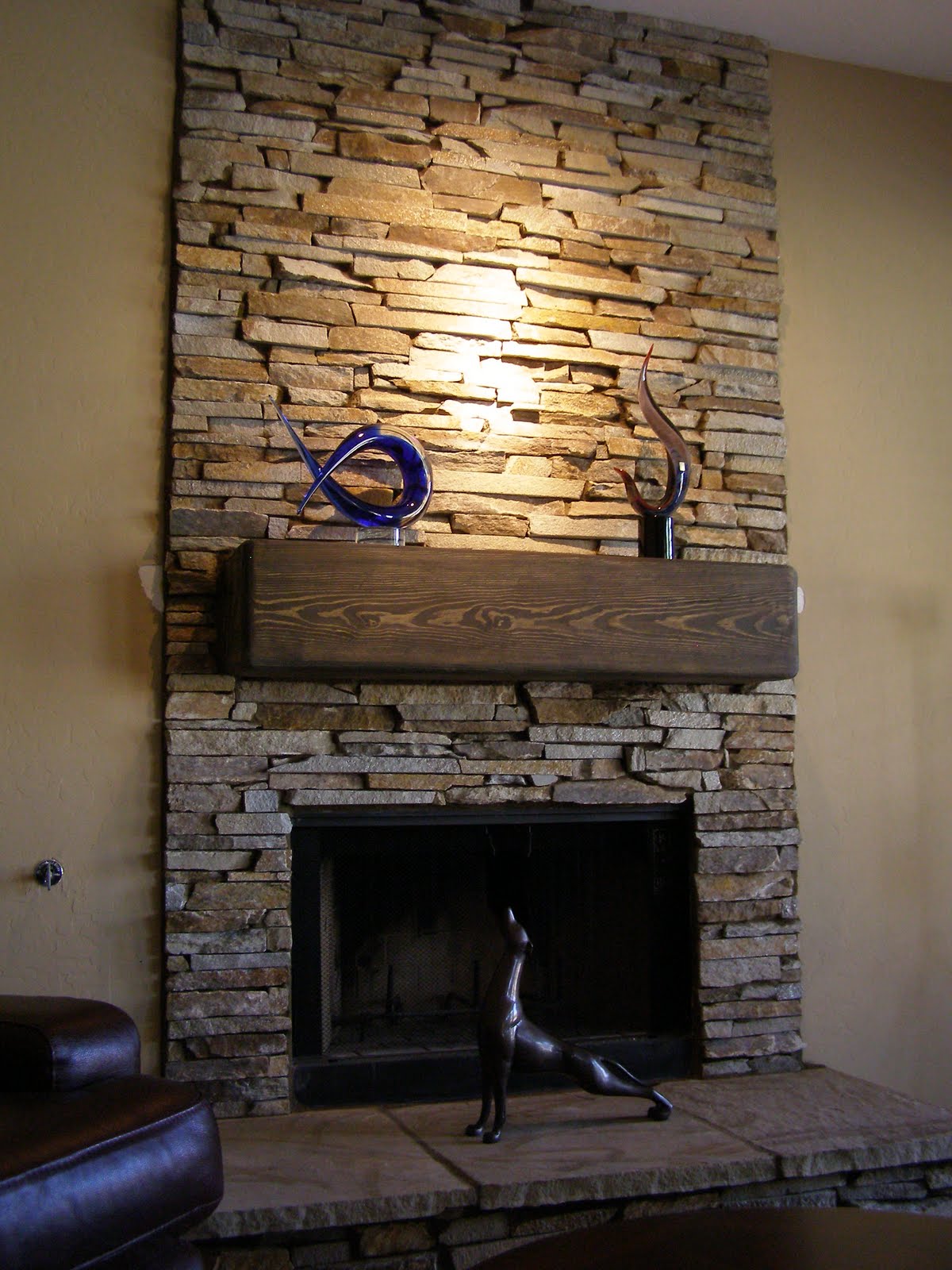Creating a Cozy Home with Dry Stack Stone Fireplace Veneer
There’s something incredibly comforting about a fireplace. It’s a place where we gather, share stories, and unwind after a long day. The design of a fireplace can significantly impact the atmosphere of a room, and one of the most timeless and charming choices is a dry stack stone veneer. This style brings the rugged beauty of nature into your home, offering a blend of rustic warmth and modern sophistication. A dry stack stone veneer fireplace can transform your space into a cozy haven, making it a perfect addition to any home. Today we will talk about dry stack stone veneer and explore how it can enhance your living space.

What is Dry Stack Stone Veneer?
Dry stack stone veneer is a decorative stone cladding technique that mimics the look of a traditional stone wall without the use of mortar between the stones. The stones are meticulously arranged to create a seamless, natural look that appears as if the stones are simply stacked upon one another. This technique brings a sense of rugged elegance to any space and can be used both indoors and outdoors.
One of the main benefits of dry stack stone veneer is its versatility. It can be applied to a variety of surfaces, including brick, concrete, and wood, making it an ideal choice for homeowners looking to upgrade their fireplace without undertaking a major renovation. The stones come in a range of colors, shapes, and sizes, allowing you to customize the look to suit your style and the overall aesthetic of your home.
The installation of dry stack stone veneer is a relatively straightforward process, especially compared to building a traditional stone wall. Because the stones are thin and lightweight, they can be easily adhered to a prepared surface using mortar or a special adhesive. This makes it a cost-effective option for those looking to add the beauty of stone to their home without the expense and labor involved in traditional stone masonry.

Dry stack stone veneer also provides a durable, low-maintenance surface that can withstand the heat of a fireplace, as well as the wear and tear of everyday life. Unlike some other materials, stone veneer does not fade or peel over time, and it can be easily cleaned with a damp cloth or mild detergent. This makes it a great choice for busy households looking for a beautiful yet practical design solution.
In addition to its aesthetic and practical benefits, dry stack stone veneer can also add value to your home. A well-designed stone fireplace is often a sought-after feature for homebuyers, and the addition of a dry stack stone veneer can make your home stand out in the market. This investment not only enhances your living space but can also pay off in the long run if you decide to sell your home.
Finally, dry stack stone veneer can be paired with a variety of other design elements to create a cohesive look in your home. Whether you prefer a rustic, farmhouse style or a more modern, minimalist aesthetic, stone veneer can complement a wide range of design styles, making it a versatile choice for any home.

Choosing the Right Stone for Your Fireplace
Choosing the right stone for your dry stack stone veneer fireplace is a crucial step in creating a cohesive and appealing look. The type of stone you select can dramatically change the overall feel of your space, so it’s important to choose wisely. Factors to consider include color, texture, and shape, as well as how the stone complements your existing decor.
When it comes to color, think about the mood you want to create in your space. Lighter stones, such as limestone or sandstone, can brighten up a room and create a more open, airy feel. Darker stones, like slate or granite, can add depth and drama, making your fireplace a bold focal point in the room. You might also consider using a mix of colors to add visual interest and create a more dynamic, textured look.
Texture is another important consideration when choosing stone for your fireplace. Some stones have a smooth, polished finish, while others have a rough, natural texture. A rougher texture can add a rustic, rugged feel to your space, while a smoother finish can create a more refined, sophisticated look. Think about how the texture of the stone will interact with other elements in your room, such as furniture, flooring, and lighting.

The shape of the stones can also affect the overall look of your fireplace. Rectangular stones can create a more structured, formal appearance, while irregularly shaped stones can give a more organic, natural feel. You might also consider using a combination of shapes to create a more eclectic, visually interesting design. This can add depth and dimension to your fireplace, making it a true centerpiece in your room.
When choosing stone for your fireplace, it’s also important to consider how it will complement your existing decor. Think about the colors, textures, and materials already present in your space, and choose a stone that will harmonize with these elements. For example, if you have a lot of wood furniture and warm, earthy tones in your home, you might choose a stone with similar hues to create a cohesive look.
Another factor to consider is the size of your fireplace and the space around it. Larger stones can make a bold statement in a spacious room, while smaller stones might be more appropriate for a smaller space. Think about how the scale of the stones will relate to the size of your fireplace and the surrounding area, and choose a size that will create a balanced, harmonious look.
Finally, consider the overall style of your home when choosing stone for your fireplace. If you have a modern, minimalist home, you might choose a sleek, smooth stone in a neutral color to create a clean, contemporary look. If you have a more traditional or rustic home, you might opt for a rougher, more textured stone in warm, earthy tones to create a cozy, inviting atmosphere.

The Installation Process of Dry Stack Stone Veneer
Installing a dry stack stone veneer fireplace can seem like a daunting task, but with a bit of planning and preparation, it can be a manageable DIY project. The first step in the installation process is to prepare the surface. The surface must be clean, dry, and free of any loose or flaking material. Depending on the existing surface, this might involve removing old paint, wallpaper, or other coverings.
Once the surface is prepared, the next step is to apply a scratch coat of mortar. This helps to create a rough surface for the stone veneer to adhere to. The scratch coat should be applied in a thin, even layer using a trowel, and then scored with a notched trowel or a stiff brush to create grooves that will help the stone adhere better. It’s important to let the scratch coat dry completely before proceeding to the next step.
After the scratch coat has dried, it’s time to start applying the stone veneer. Begin by laying out the stones on the ground to create a rough layout of your design. This will help you visualize how the stones will fit together and ensure that you have a good mix of colors, shapes, and sizes. Once you’re happy with the layout, you can begin applying the stones to the wall.

To apply the stones, spread a layer of mortar or adhesive on the back of each stone and press it firmly onto the wall, starting at the bottom and working your way up. It’s important to press the stones firmly into the mortar to ensure a strong bond. You may need to trim some stones to fit around corners or edges, which can be done using a masonry saw or chisel. Be sure to check that each stone is level before moving on to the next one.
As you work your way up the wall, it’s important to periodically step back and check your work to ensure that the stones are aligned and evenly spaced. Because dry stack stone veneer is installed without mortar joints, it’s important to take your time and carefully place each stone to create a seamless, natural look. You might also consider using spacers or shims to help maintain consistent spacing between the stones.
Once all the stones are in place, the final step is to clean the surface. Use a soft brush or cloth to remove any excess mortar or adhesive from the stones, being careful not to disturb the stones themselves. It’s also a good idea to mist the stones with water to help the mortar cure properly. This will help ensure a strong bond and prevent the stones from shifting over time.

Enhancing Your Fireplace with Mantels and Accessories
A dry stack stone veneer fireplace can be a stunning focal point on its own, but adding a mantel and other accessories can enhance its beauty and functionality. A mantel can provide a space to display decorative items, such as candles, vases, or artwork, and can also help frame the fireplace and draw attention to its natural beauty.
When choosing a mantel for your fireplace, consider the style and materials that will best complement the stone veneer. For a rustic look, consider a reclaimed wood mantel with a natural, weathered finish. This can add warmth and character to your fireplace and create a cohesive look with the stone veneer. For a more modern look, consider a sleek, metal mantel with clean lines and a minimalist design.
The size and placement of the mantel are also important considerations. A mantel that is too large or too small can look out of proportion with the fireplace and the surrounding space. The height of the mantel should also be considered, as it can affect the overall look and feel of the fireplace. A higher mantel can create a more formal, traditional look, while a lower mantel can create a more casual, relaxed feel.
In addition to a mantel, consider adding other accessories to enhance your fireplace. A set of decorative fireplace tools, such as a poker, brush, and shovel, can add a functional yet stylish element to your fireplace. A fireplace screen can also add a decorative touch while protecting from sparks and embers. Choose a screen that complements the style of your fireplace and enhances its overall look.
Another great accessory for a dry stack stone veneer fireplace is a hearth rug. A hearth rug not only adds a decorative touch to your fireplace but also provides a layer of protection for your floors. Choose a rug that complements the colors and textures of your stone veneer and other accessories to create a cohesive, harmonious look.
Finally, consider adding lighting to highlight your fireplace and create a warm, inviting atmosphere. Wall sconces or recessed lighting can be installed on either side of the fireplace to provide ambient lighting and draw attention to the stone veneer. A set of candles or lanterns on the mantel can also add a soft, flickering glow that enhances the cozy ambiance of your fireplace.

Maintaining Your Dry Stack Stone Veneer Fireplace
A dry stack stone veneer fireplace is relatively low maintenance, but it still requires some care to keep it looking its best. Regular cleaning is essential to prevent dirt and soot buildup and maintain the natural beauty of the stone. The best way to clean a stone veneer fireplace is to use a soft brush or cloth and a mild detergent. Avoid using harsh chemicals or abrasive cleaners, as these can damage the stone.
In addition to regular cleaning, it’s important to inspect your fireplace periodically for any signs of damage or wear. Check for any loose or cracked stones, as well as any areas where the mortar or adhesive may have deteriorated. Addressing these issues promptly can prevent further damage and ensure the longevity of your fireplace.
If you notice any staining on your stone veneer, it’s important to clean it as soon as possible to prevent the stain from setting. Most stains can be removed with a mild detergent and a soft brush, but more stubborn stains may require a specialized stone cleaner. Be sure to test any cleaner on a small, inconspicuous area before applying it to the entire surface to ensure it does not damage the stone.
Sealing your stone veneer fireplace can also help protect it from stains and moisture. A quality stone sealer can provide a protective barrier that repels water and stains, making it easier to clean and maintain your fireplace. Be sure to choose a sealer that is specifically designed for stone veneer and follow the manufacturer’s instructions for application.
Another important aspect of maintaining your stone veneer fireplace is to check the chimney and flue regularly to ensure they are clean and in good working order. A blocked or dirty chimney can cause smoke and soot buildup on your stone veneer, as well as pose a fire hazard. Having your chimney and flue inspected and cleaned by a professional at least once a year is a good practice to ensure the safety and functionality of your fireplace.
Finally, if you live in an area with extreme weather conditions, it’s important to protect your stone veneer fireplace from the elements. For outdoor fireplaces, consider covering the fireplace during periods of heavy rain or snow to prevent water damage. For indoor fireplaces, ensure that the room is adequately ventilated to prevent moisture buildup, which can cause staining and damage to the stone.

Incorporating a Dry Stack Stone Veneer Fireplace into Different Design Styles
A dry stack stone veneer fireplace can be a versatile design element that complements a variety of interior styles. Whether you prefer a rustic, modern, or traditional look, there are many ways to incorporate a stone veneer fireplace into your home decor.
For a rustic or farmhouse style, consider pairing your stone veneer fireplace with natural wood elements, such as a reclaimed wood mantel or wooden beams. This combination creates a warm, cozy atmosphere that is perfect for a country or mountain home. Add some vintage accessories, such as an antique mirror or old-fashioned lanterns, to enhance the rustic charm of your fireplace.
In a modern or contemporary home, a dry stack stone veneer fireplace can add texture and warmth to an otherwise sleek, minimalist space. Opt for a stone with a clean, simple design and pair it with modern furnishings and accessories, such as a metal mantel or a set of sleek, modern fireplace tools. The contrast between the natural stone and the modern elements can create a striking, sophisticated look.
For a traditional or classic style, consider using a more refined stone veneer with a polished finish and a neutral color palette. Pair the fireplace with elegant furnishings and accessories, such as a marble mantel or a set of ornate fireplace tools, to create a timeless, sophisticated look. Adding some classic artwork or a decorative mirror above the mantel can also enhance the traditional appeal of your fireplace.
A dry stack stone veneer fireplace can also be incorporated into a coastal or beach-themed home. Choose a light-colored stone, such as limestone or sandstone, to create a bright, airy feel that complements the coastal aesthetic. Pair the fireplace with nautical-themed accessories, such as seashells, driftwood, or a piece of coastal artwork, to complete the look.
For an industrial or loft-style home, consider using a dark, rugged stone veneer, such as slate or granite, to create a bold, dramatic statement. Pair the fireplace with metal or concrete elements, such as a metal mantel or a concrete hearth, to enhance the industrial vibe. Add some industrial-style lighting, such as exposed bulbs or metal pendant lights, to complete the look.
Finally, if you prefer an eclectic or bohemian style, a dry stack stone veneer fireplace can be a great way to add texture and interest to your space. Mix and match different colors, textures, and materials to create a unique, personalized look that reflects your style. Add some colorful accessories, such as a patterned rug or a set of colorful throw pillows, to enhance the eclectic appeal of your fireplace.

Common Mistakes to Avoid
Neglecting Proper Surface Preparation
One of the most common mistakes when installing dry stack stone veneer is failing to properly prepare the surface. A clean, dry, and stable surface is crucial for ensuring a strong bond between the stone and the wall. Neglecting this step can lead to stones falling off over time, which not only looks unsightly but can also pose a safety hazard. Always make sure to thoroughly clean and prepare the surface before beginning the installation process.
Not Using the Correct Adhesive or Mortar
Another common mistake is using the wrong type of adhesive or mortar for your stone veneer. It’s important to use a product that is specifically designed for stone veneer and can withstand the weight and environmental conditions of your fireplace. Using the wrong adhesive can lead to poor adhesion, causing the stones to shift or fall off over time. Always check the manufacturer’s recommendations and choose the right product for your specific application.
Improper Stone Placement and Alignment
Dry stack stone veneer is designed to be installed without visible mortar joints, so it’s important to carefully place and align each stone to create a seamless, natural look. Rushing the installation or not taking the time to properly align the stones can result in an uneven, unprofessional appearance. Take your time during the installation process, and use spacers or shims if necessary to ensure even spacing and alignment.
Overlooking the Need for a Scratch Coat
A scratch coat is an essential step in the installation process, as it provides a rough surface for the stone veneer to adhere to. Skipping this step or applying the scratch coat improperly can result in poor adhesion and a less durable installation. Make sure to apply the scratch coat evenly and allow it to dry completely before proceeding with the installation.
Failing to Seal the Stone Veneer
Sealing your stone veneer is important to protect it from stains, moisture, and damage. Failing to seal the stone can lead to discoloration, water damage, and deterioration over time. Choose a high-quality sealer that is specifically designed for stone veneer, and apply it according to the manufacturer’s instructions to ensure long-lasting protection.
Ignoring the Importance of Regular Maintenance
Even though dry stack stone veneer is relatively low maintenance, it still requires some care to keep it looking its best. Neglecting regular cleaning and maintenance can lead to dirt and soot buildup, staining, and other issues. Make sure to clean your fireplace regularly and address any issues promptly to keep your stone veneer looking beautiful for years to come.

What is the best type of stone for a dry stack stone veneer fireplace?
The best type of stone for a dry stack stone veneer fireplace depends on your style and the overall look you want to achieve. Common options include limestone, sandstone, slate, and granite. Each type of stone has its unique characteristics and color variations, so it’s important to choose a stone that complements your home’s decor and the aesthetic you’re aiming for. Light-colored stones like limestone or sandstone can create a bright, airy feel, while darker stones like slate or granite add depth and drama.
Can I install dry stack stone veneer myself, or should I hire a professional?
Installing dry stack stone veneer can be a DIY project if you have some experience with home improvement projects and are comfortable working with stone and mortar. However, it’s important to follow the proper steps and use the right materials to ensure a successful installation. If you’re unsure about any aspect of the installation process or if the project involves structural changes, it may be best to hire a professional to ensure the job is done correctly and safely.
How do I maintain a dry stack stone veneer fireplace?
Maintaining a dry stack stone veneer fireplace involves regular cleaning to remove dirt, soot, and debris. Use a soft brush or cloth and a mild detergent to clean the surface, and avoid using harsh chemicals or abrasive cleaners that could damage the stone. It’s also important to inspect the fireplace periodically for any signs of damage, such as loose or cracked stones, and address any issues promptly. Sealing the stone veneer can also help protect it from stains and moisture, making it easier to clean and maintain.
Is dry stack stone veneer suitable for both indoor and outdoor fireplaces?
Yes, dry stack stone veneer is suitable for both indoor and outdoor fireplaces. However, it’s important to choose a stone that is appropriate for the specific environment. For outdoor fireplaces, select a stone that can withstand the elements, such as freeze-thaw cycles, moisture, and UV exposure. Additionally, make sure to use an appropriate adhesive or mortar that is designed for outdoor use to ensure a durable, long-lasting installation.
How much does it cost to install a dry stack stone veneer fireplace?
The cost of installing a dry stack stone veneer fireplace can vary widely depending on factors such as the size of the fireplace, the type of stone chosen, and whether you hire a professional or do it yourself. On average, the cost can range from $1,000 to $5,000 or more. The price of the stone veneer itself can vary based on the type and quality of the stone, as well as the supplier. Labor costs will also vary depending on the complexity of the installation and the rates of local contractors.
Can dry stack stone veneer be installed over an existing fireplace?
Yes, dry stack stone veneer can be installed over an existing fireplace, provided the surface is clean, stable, and properly prepared. If the existing fireplace is made of brick, concrete, or another suitable material, the stone veneer can be adhered directly to the surface using mortar or adhesive. If the existing fireplace is made of a less stable material, such as drywall or wood, additional preparation may be required to create a suitable surface for the stone veneer. It’s important to consult with a professional if you’re unsure about the suitability of your existing fireplace for a stone veneer installation.

Related Posts: